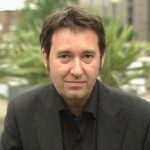Link to Pubmed [PMID] – 19545994
Curr. Opin. Neurobiol. 2009 Apr;19(2):231-4
Autism spectrum disorders (ASD) are diagnosed on the basis of three behavioral features namely deficits in social communication, absence or delay in language, and stereotypy. The susceptibility genes to ASD remain largely unknown, but two major pathways are emerging. Mutations in TSC1/TSC2, NF1, or PTEN activate the mTOR/PI3K pathway and lead to syndromic ASD with tuberous sclerosis, neurofibromatosis, or macrocephaly. Mutations in NLGN3/4, SHANK3, or NRXN1 alter synaptic function and lead to mental retardation, typical autism, or Asperger syndrome. The mTOR/PI3K pathway is associated with abnormal cellular/synaptic growth rate, whereas the NRXN-NLGN-SHANK pathway is associated with synaptogenesis and imbalance between excitatory and inhibitory currents. Taken together, these data strongly suggest that abnormal synaptic homeostasis represent a risk factor to ASD.

